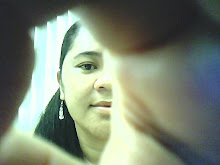I believe that without assistive technology products, children with disabilities would have been left behind, ignored, or not accepted at the regular schools because the teacher wont be able to assist the them without any assistive technology. Like in many many years ago when these assistive technologies weren’t yet invented, individuals with severe disabilities were not included in the mainstream.
There are many different kinds of disabilities, but various assistive technology tools are invented to accommodate the children with disabilities that are interested to go to school. Today’s technology made it so possible for individuals with disabilities, regardless of severe or minor special need, to learn, perform, or even improve and increase their capabilities. Therefore, there is no excuse for the schools or teachers to excluded any children with disabilities in the regular classrooms.
If a teacher finds a student who has disability(ies) or special need, the teacher must first identify the kind of disability the student has, determine the best way for a student to access a device, and then select an assistive technology that can effectively allow the student to learn and perform tasks at school. The lesson plans, materials, and procedures have to be made assessable for the students with disabilities. The best way to asses a student’s understanding of a subject is through performance-based assessment.
A student with disability can not be assessed if he/she doesn’t perform. How can the teacher know and be sure that the student understand what has being taught in class. In order to assess these kind of students , with disabilities, using assistive tools will be the only possible way to perform and be assessed. The teacher will need to do modification on the activities, objectives, and procedure until he/she sees and proves that the student with disability learns and fully understands the lesson.
The teacher has to allow time for the student to practice and get used to the tool and master it before his/her understanding of the subject can be assessed. The student with disability could probably fully understand the lesson and can apply the concepts but if he/she can’t perform his/her understanding using the assistive tool, then the teacher has to do something about it. The teacher has to train the student to use the tool to perform his/her understanding. Or the tool is probably not the perfect tool for his/her kind of disability.
There could possible be cases where the students with certain disabilities be exempted. For instance, if the class is required to do a presentation orally, a student with speech impairment could just present his/her work on slides with written explanation about his/her work. There are assistive tools made to assist students with speech impairment but if a presentation is being timed, the assistive tool might not be able to perform at a required speed. The teacher has to be patient and smart enough to think of any way to get all students engaged, participate, and perform in order to be able to be assessed.
Never exclude the students with disabilities from doing all the activities required in class. They can perform in any way, any thing, any how.
There are many different kinds of disabilities, but various assistive technology tools are invented to accommodate the children with disabilities that are interested to go to school. Today’s technology made it so possible for individuals with disabilities, regardless of severe or minor special need, to learn, perform, or even improve and increase their capabilities. Therefore, there is no excuse for the schools or teachers to excluded any children with disabilities in the regular classrooms.
If a teacher finds a student who has disability(ies) or special need, the teacher must first identify the kind of disability the student has, determine the best way for a student to access a device, and then select an assistive technology that can effectively allow the student to learn and perform tasks at school. The lesson plans, materials, and procedures have to be made assessable for the students with disabilities. The best way to asses a student’s understanding of a subject is through performance-based assessment.
A student with disability can not be assessed if he/she doesn’t perform. How can the teacher know and be sure that the student understand what has being taught in class. In order to assess these kind of students , with disabilities, using assistive tools will be the only possible way to perform and be assessed. The teacher will need to do modification on the activities, objectives, and procedure until he/she sees and proves that the student with disability learns and fully understands the lesson.
The teacher has to allow time for the student to practice and get used to the tool and master it before his/her understanding of the subject can be assessed. The student with disability could probably fully understand the lesson and can apply the concepts but if he/she can’t perform his/her understanding using the assistive tool, then the teacher has to do something about it. The teacher has to train the student to use the tool to perform his/her understanding. Or the tool is probably not the perfect tool for his/her kind of disability.
There could possible be cases where the students with certain disabilities be exempted. For instance, if the class is required to do a presentation orally, a student with speech impairment could just present his/her work on slides with written explanation about his/her work. There are assistive tools made to assist students with speech impairment but if a presentation is being timed, the assistive tool might not be able to perform at a required speed. The teacher has to be patient and smart enough to think of any way to get all students engaged, participate, and perform in order to be able to be assessed.
Never exclude the students with disabilities from doing all the activities required in class. They can perform in any way, any thing, any how.

Hi:
ReplyDeleteVery nicely written
-j-